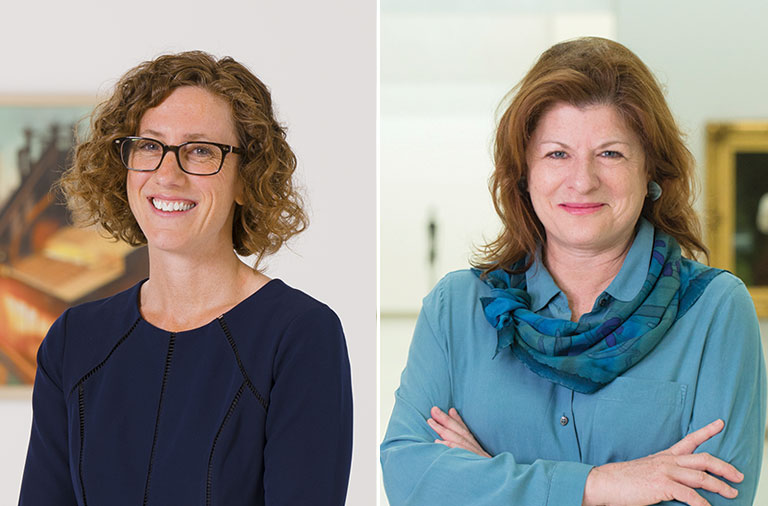You May Also Like
A Weighty Conversation In Celebration of Artists and Their Truth Art in Contradiction
Sarah Minnaert and Catherine Evans Photos: Bryan Conley and Joshua Franzos
Since 1896, the Carnegie International has brought the world to Pittsburgh. At the outset, this recurring showcase of contemporary painting drew mostly from Western Europe and the United States. With huge shifts in the ways artists make work and where they are situated, much has changed in 122 years. The Carnegie International has blossomed into a truly global undertaking. This fall, we will welcome 32 artists and artist collectives plus an independent exhibition maker linked to five continents.
For curator Ingrid Schaffner, these statistics are more than a footnote. Under her guidance, the 57th iteration of the Carnegie International has launched a sustained, nuanced investigation of the term international—one of Andrew Carnegie’s founding concepts. Metaphorically and literally crossing bridges, the International in turn brings Pittsburgh to the world. Artist collaborations with Pittsburgh connections include Ghanaian sculptor El Anatsui with Wilkinsburg-based sculptor and architect Dee Briggs, and Philadelphia-based painter and installation artist Karen Kilimnik with the Pittsburgh Ballet Theatre and Carnegie Museum of Art’s very own Women’s Committee.
Beyond the exhibition itself, Schaffner and her team—associate curator Liz Park and curatorial assistant Ashley McNelis—designed a slate of programs to engage locals and out-of-town visitors, art novices and connoisseurs. KEYWORD: INTERNATIONAL, a project developed with the Kelly Strayhorn Theater, fosters a dialogue with creative producers to explore how the global impacts a community, our community. Meanwhile, the Tam O’Shanter Drawing Sessions explore contemporary art through drawing, doodling, and sketching, each led by an International artist or participant and continuing through the run of the show. Perhaps you found yourself making silk watercolors at The Frick with Vietnamese artist collective Art Labor, or piecing together zines (self-publications) with Kenyan photographer Mimi Cherono Ng’ok.
The 57th iteration of the Carnegie International has launched a sustained, nuanced investigation of the term international—one of Andrew Carnegie’s founding concepts. Metaphorically and literally crossing bridges, the International in turn brings Pittsburgh to the world.
We are proud that this International is a platform for inclusivity. It’s the first time the majority of the artists identify with the pronoun she. It’s also the first biennial-style show to be certified by W.A.G.E. (Working Artists and the Greater Economy), an organization that advocates for fair payment of artists to establish sustainable labor relationships. As a complement to the International, the recently completed Crossroads: Carnegie Museum of Art’s Collection, 1945 to Now is a reimagining of our collection galleries that features greater visibility for artists of color and women, surfacing lesser-known stories about our wide-ranging, stunning collection
of postwar art.
From the beginning, Carnegie Museum of Art has had an ongoing commitment to acquire artwork from the Carnegie International for its permanent collection. The Wreck, a masterwork by Winslow Homer currently on view in the Scaife Galleries, was the first acquisition out of the very first International in 1896. Look for news of acquisitions out of this upcoming edition—you may discover that your favorite work will remain in Pittsburgh!
At Carnegie Museum of Art, we create experiences to connect people to art, ideas, and one another, and we are delighted to host an exhibition of such thoughtful integrity and creative promise. We thank the many donors, lenders, artists, collaborators, and staff who make this endeavor possible.
Catherine Evans and Sarah Minnaert
The Henry J. Heinz II Acting Co-Directors,
Carnegie Museum of Art
Receive more stories in your email
Sign upTags:
Carnegie International